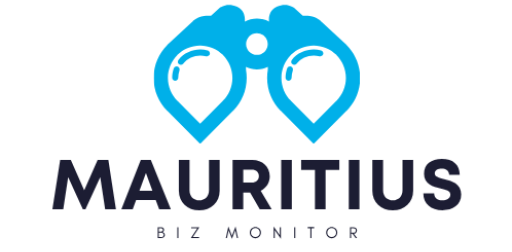Introduction
Medical aid is more than just a healthcare safety net — it’s a financial lifeline that helps South Africans access quality private medical care without massive out-of-pocket costs. But simply having Medical aid isn’t enough; how you use it determines whether you get real value for your money.
With premiums rising sharply each year, it’s crucial to take a strategic approach to your plan. This guide explains nine powerful strategies to help you maximise your Medical aid, reduce waste, and ensure your benefits truly work for you and your family.
Let’s dive into how you can make smarter decisions and stretch every rand from your health cover.
Medical aid analysis: know exactly what your plan offers
The first step in maximising value is understanding your plan in detail. Most people don’t fully know what their Medical aid covers until they need to use it — which can lead to surprise co-payments or rejected claims.
Read through your plan guide carefully. Note your hospital limits, day-to-day benefits, and chronic condition coverage. Many schemes offer downloadable member guides or online portals with clear summaries.
Once you know your benefits, you can plan your healthcare spending better and avoid paying for services outside your cover.
Medical aid upgrades: adjust your plan before renewal
Your healthcare needs change over time, and so should your Medical aid plan. Renewal season, typically around year-end, is the best time to review whether your plan still fits your lifestyle and health status.
If you had a major life event — such as getting married, having a baby, or developing a chronic condition — you may need more comprehensive coverage. Conversely, if you barely used your benefits, a hospital plan could save you money.
Review your claims from the past year and adjust accordingly. The right balance between affordability and coverage ensures you never overpay or underinsure.
Medical aid networks: always use in-network providers
Most Medical aid schemes offer network options, meaning they partner with specific hospitals, GPs, and specialists. When you use these network providers, your costs are covered at agreed scheme rates — but if you go outside the network, you may face large co-payments.
Before booking appointments or elective procedures, confirm that your chosen provider is part of the scheme’s network. Many schemes have “Find a Doctor” tools online or within their mobile apps.
This simple habit can prevent unnecessary bills and ensure you stay fully covered for all authorised services.
Medical aid authorisation: avoid claim rejections
A common reason for rejected claims is a lack of pre-authorisation. Many procedures — from MRIs to hospital admissions — require prior approval from your Medical aid.
Always call or log in to your scheme portal before any major test, surgery, or specialist consultation. Once authorised, keep the reference number on record.
This not only ensures smoother processing of your claims but also gives you clarity about what portion of the bill your scheme will pay. Being proactive with authorisations keeps your finances secure and your cover intact.
Medical aid and chronic medication: register for better benefits
If you have a chronic condition, register it with your scheme under the Prescribed Minimum Benefits (PMBs). This registration ensures you get your medication and essential care paid for, subject to approved formularies.
Many members forget to register chronic conditions and end up using their day-to-day benefits unnecessarily. Once registered, your chronic medication is paid from a separate benefit, saving you significant annual costs.
You can apply easily by having your doctor complete the scheme’s chronic condition form. This small step can dramatically extend the life of your annual medical benefits.
Medical aid cost-saving: reduce waste and unnecessary claims
One of the smartest strategies is learning how to prevent waste. Using generic medicines instead of branded ones can cut your prescription costs by up to 40%.
You should also combine GP visits where possible — discussing multiple issues in one consultation rather than separate visits. If you have access to telemedicine, use it for non-urgent consultations to save both time and money.
Small behaviour changes, such as comparing pharmacy prices or using scheme-preferred providers, can yield significant annual savings.
Medical aid gap cover: protect yourself from shortfalls
Even the best Medical aid plans may not pay doctors’ fees in full. Specialists sometimes charge more than your scheme’s tariff, leaving you responsible for the difference.
To protect yourself, consider adding gap cover — a separate insurance product that pays these shortfalls. Gap cover is affordable and provides peace of mind during costly procedures.
While it’s not a substitute for Medical aid, it complements your plan perfectly and ensures you’re not left with surprise medical debt after hospital treatment.
Medical aid and preventive health: invest in early detection
Prevention is always better — and cheaper — than cure. Most Medical aid schemes offer free or subsidised preventive care benefits, including flu shots, annual health checks, pap smears, and cholesterol screenings.
Taking advantage of these benefits not only keeps you healthier but also helps your scheme avoid expensive claims, which ultimately stabilises contribution rates for everyone.
Schedule your preventive checks each year, and encourage your dependants to do the same. It’s a small effort that delivers lifelong health and financial benefits.
Medical aid communication: stay informed and engaged
To get the best out of your Medical aid, stay connected. Subscribe to your scheme’s newsletters, join member webinars, and download their mobile app for real-time claim tracking.
By understanding scheme updates, tariff changes, and new benefits, you’ll always know how to optimise your usage. Don’t hesitate to contact your scheme’s support team when you need clarification — they can help you find affordable treatment options and avoid policy pitfalls.
Active engagement turns you from a passive member into a smart, empowered healthcare consumer.
FAQs
How can I save money on my Medical aid plan?
You can save by choosing in-network providers, using generic medicines, and reviewing your plan annually to eliminate unused benefits.
What happens if I forget to authorise a hospital procedure?
If a procedure isn’t pre-authorised, your claim may be partially or fully rejected, leaving you responsible for the unpaid amount.
Is gap cover necessary if I already have Medical aid?
Yes. Gap cover complements your Medical aid by paying for doctor or specialist shortfalls not covered by your scheme’s rates.
Conclusion
Medical aid remains a cornerstone of healthcare security in South Africa, but its value depends on how well you manage it. By applying these nine powerful strategies — from using network providers and registering chronic conditions to leveraging digital tools and preventive care — you can get the most from your plan while avoiding unnecessary costs.
Being informed, proactive, and strategic ensures that your Medical aid doesn’t just protect you in emergencies but also supports your long-term health and financial well-being.




